Overview of DSP
A DSP (Digital Signal Processor) is a unique microprocessor with its own complete instruction set, designed to process large amounts of information in digital signals. Its most notable feature is the presence of dedicated hardware multipliers and a Harvard architecture, which allows for fast processing of numerous digital signals. A digital signal processor includes a control unit, arithmetic unit, various registers, and a certain number of memory units all within a small chip, and can connect to several external memory units and communicate with a number of external devices, providing comprehensive software and hardware functionality, effectively making it a microcomputer.
The DSP adopts a Harvard design, meaning that the data bus and address bus are separate, allowing programs and data to be stored in two distinct spaces, enabling instruction fetching and execution to overlap completely. This means that while executing one instruction, the next instruction can be fetched and decoded simultaneously, greatly enhancing the speed of the microprocessor. Additionally, it allows for data transfer between program space and data space, increasing the flexibility of the device.
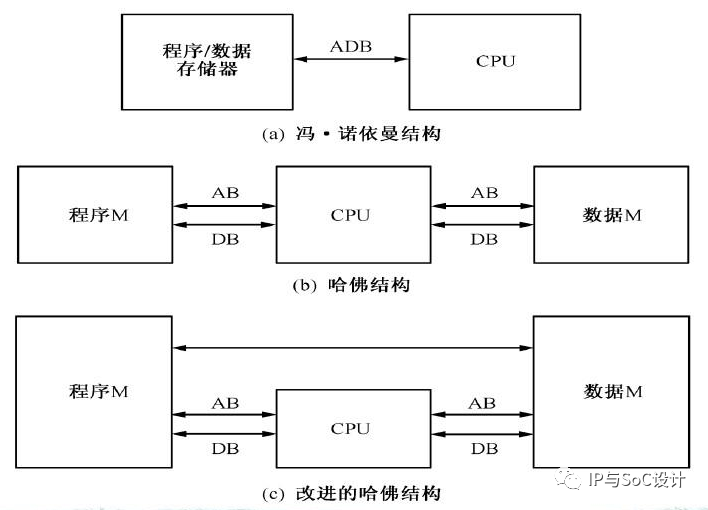
In today’s digital age, DSPs have become fundamental components in fields such as communications, computing, and consumer electronics.
According to the requirements of digital signal processing, DSP chips generally have the following main characteristics:
(1) Can complete one multiplication and one addition in a single instruction cycle.
(2) Separate program and data spaces, allowing simultaneous access to instructions and data.
(3) On-chip fast RAM, typically accessible simultaneously through independent data buses.
(4) Hardware support for low-overhead or no-overhead loops and jumps.
(5) Fast interrupt handling and hardware I/O support.
(6) Multiple hardware address generators capable of operating in a single cycle.
(7) Ability to execute multiple operations in parallel.
(8) Support for pipelined operations, allowing instruction fetching, decoding, and execution to overlap.
Compared to general-purpose microprocessors, DSP chips have relatively weaker general-purpose functionalities.
The Birth of DSP Chips
The emergence of DSP chips was a necessity of the times. Since the 1960s, with the rapid development of computers and information technology, digital signal processing technology has emerged and developed rapidly. Before the advent of DSP chips, digital signal processing could only be accomplished using microprocessors. However, due to the relatively slow processing speed of microprocessors, they could not meet the high-speed real-time requirements of increasingly large amounts of information.
By the 1970s, the theoretical and algorithmic foundations of DSP chips had matured. However, at that time, DSPs were only found in textbooks, and even the DSP systems developed were composed of discrete components, with applications limited to military and aerospace sectors.
In 1978, AMI released the world’s first single-chip DSP, the S2811, but it lacked the hardware multipliers necessary for modern DSP chips;
In 1979, Intel’s commercial programmable device 2920 marked a significant milestone for DSP chips, but it still lacked hardware multipliers;
In 1980, Japan’s NEC introduced the MPD7720, the first commercial DSP chip with hardware multipliers, thus considered the first single-chip DSP device;
In 1982, the first generation of DSP chips, the TMS32010 and its series, was born. This DSP device was made using micron technology NMOS, and although it had larger power consumption and size, its computation speed was dozens of times faster than that of microprocessors.
The advent of DSP chips was a milestone, marking a significant step towards miniaturization of DSP application systems. By the mid-1980s, with the emergence of CMOS technology, DSP chips saw exponential increases in storage capacity and computation speed, becoming the foundation for speech processing and image hardware processing technologies.
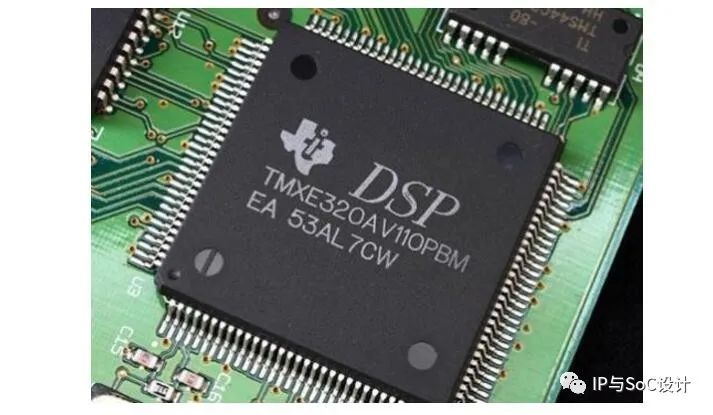
In the late 1980s, the third generation of DSP chips emerged, further increasing computation speed and gradually expanding their application range into communications and computing fields;
In the 1990s, DSP development accelerated, leading to the emergence of fourth and fifth generation DSP chips. The fifth generation, compared to the fourth, features higher system integration, integrating DSP cores and peripheral components onto a single chip.
Entering the 21st century, the sixth generation of DSP chips emerged, outperforming the fifth generation in performance and developing various personalized branches based on different commercial purposes, gradually expanding into new fields.
Application Fields of DSP Chips
Today, a wide variety of DSP devices are available in various packaging forms, widely used in the production of various products, and the application fields of DSP are continuously expanding and developing rapidly.
DSP chips emphasize the real-time nature of digital signal processing. As digital signal processors, they convert analog signals into digital signals for high-speed real-time processing by dedicated processors. They feature high speed, flexibility, programmability, and low power consumption, playing an increasingly important role in fields such as graphics and image processing, speech processing, and signal processing in communications.
According to statistics from authoritative information companies in the United States, the most common application of DSP chips in the market is in the communications field, followed by the computing field.
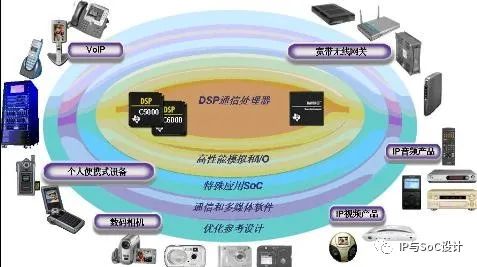
Image source: Internet
Application Fields of DSP Chips
1) Application of DSP Chips in Multimedia Communication.
The amount of information generated by media data transmission is enormous, and multimedia network terminals need to quickly analyze and process the information obtained throughout the process. Therefore, DSP is used in speech coding, image compression, and reducing voice communication. Today, DSP has become a basic international standard for real-time effects in speech decoding calculations.
2) Application of DSP Chips in Industrial Control.
In the field of industrial control, industrial robots are widely used, and the performance requirements for robot control systems are increasing. The key to robot control systems is real-time performance, as completing an action generates a significant amount of data and computation. High-performance DSPs can be employed here. By applying DSPs to robot control systems, their real-time computation speed characteristics can be fully utilized, allowing the robot systems to process problems quickly. With the continuous improvement of DSP digital signal chip speeds, it becomes easier to form parallel processing networks within the system, greatly enhancing the performance of control systems and allowing for broader development of robot systems.
3) Application of DSP Chips in Instruments and Meters.
The rich on-chip resources of DSP can greatly simplify the hardware circuitry of instruments and meters, enabling SOC design for instruments and meters. Measurement accuracy and speed are important indicators, and using DSP chips to develop products can significantly improve these two metrics. For example, TI’s TMS320F2810 features an efficient 32-bit CPU core, a 12-bit A/D converter, abundant on-chip memory, and a flexible command system, providing a broad platform for high-precision instruments. High-precision instruments have now become an important application of DSP and are in a period of rapid dissemination, driving technological innovation in the industry.
4) Application of DSP Chips in Automotive Safety and Autonomous Driving.
The automotive electronics system is increasingly thriving, with infrared and millimeter-wave radars requiring DSP for analysis. Nowadays, with the increasing number of cars, collision avoidance systems have become a research hotspot. Moreover, image data captured by cameras needs to be processed by DSP to be displayed in driving systems for driver reference.
5) Application of DSP Chips in the Military Field.
The low power consumption, small size, and real-time response speed of DSP are particularly needed in weaponry. For example, air-to-air missiles are equipped with infrared detectors and corresponding DSP signal processors within limited volumes to achieve automatic target locking and tracking. Advanced fighter jets are equipped with visual targeting systems and helmet-mounted night vision devices for soldiers, requiring DSP technology for image filtering and enhancement, as well as intelligent target search and capture. DSP technology is also used in automatic artillery control, cruise missiles, early warning aircraft, and radar digital signal processing with phased array antennas.
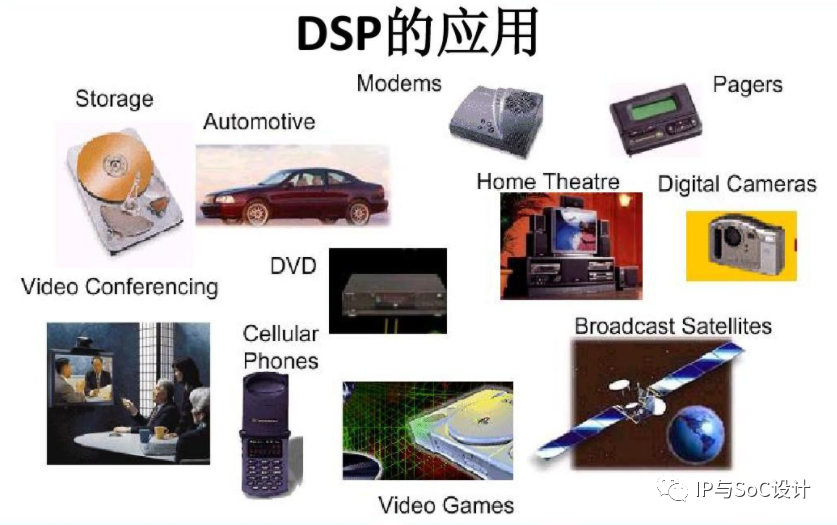
Image source: Internet
Future Directions of DSP Technology
1) Increasing Integration of DSP Cores.
Reducing the size of DSP chips has always been a trend in DSP technology development. Currently, RISC-based structures are widely used, and with the introduction of new process technologies, more manufacturers are beginning to improve DSP cores and integrate multiple DSP cores, MPU cores, and peripheral circuit units onto a single chip, achieving system-level integration of DSP circuits.
2) Programmable DSP Chips Will Be the Dominant Product in the Future.
With the need for personalized development, the programmability of DSP provides manufacturers with more flexibility, allowing them to develop a wider range of products with different model characteristics on the same DSP chip, and enabling users to upgrade their DSPs. For example, refrigerators and washing machines, which originally used microcontrollers, have now switched to programmable DSPs for high-power motor control.
3) Fixed-point DSPs Will Dominate the Market.
Currently, the mainstream products in the market are still 16-bit fixed-point programmable DSP devices. As the cost of fixed-point DSP devices continues to decrease and their energy consumption becomes increasingly lower, fixed-point DSP chips will remain the main players in the market.
Classification of DSP Chips
DSP chips can be classified in the following three ways.
(1) Based on Basic Characteristics
This classification is based on the working clock and instruction types of DSP chips. If a DSP chip can operate normally at any frequency within a certain clock frequency range without performance degradation, it is generally referred to as a static DSP chip.
If there are two or more DSP chips whose instruction sets and corresponding machine code pin structures are compatible, these DSP chips are referred to as consistent DSP chips.
(2) Based on Data Format
This classification is based on the data format in which DSP chips operate. DSP chips that operate in fixed-point format are called fixed-point DSP chips, while those operating in floating-point format are called floating-point DSP chips. Different floating-point DSP chips may use different floating-point formats; some use custom floating-point formats, while others use the IEEE standard floating-point format.
(3) Based on Purpose
According to the purpose of DSP chips, they can be divided into general-purpose DSP chips and dedicated DSP chips. General-purpose DSP chips are suitable for ordinary DSP applications, such as TI’s series of DSP chips. Dedicated DSP chips are designed for specific DSP computations and are more suitable for specialized operations, such as digital filtering, convolution, and FFT.
Basic Structure of DSP Chips
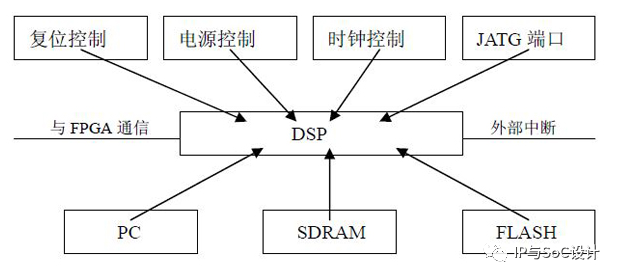
The basic structure of DSP chips includes:
(1) Harvard Architecture. The main feature of Harvard architecture is that programs and data are stored in different storage spaces, meaning that program memory and data memory are two independent memories, each with its own addressing and access. Corresponding to the two memories are the program bus and data bus in the system, which doubles the data throughput. Since programs and memories are in two separate spaces, instruction fetching and execution can completely overlap.
(2) Pipelined Operations. Pipelining is related to Harvard architecture, and DSP chips widely adopt pipelining to reduce instruction execution time, thereby enhancing the processing capability of the processor. The processor can process two to four instructions in parallel, with each instruction at a different stage of the pipeline.
(3) Dedicated Hardware Multipliers. The faster the multiplication speed, the higher the performance of the DSP processor. With dedicated application multipliers, multiplication can be completed in a single instruction cycle.
(4) Special DSP Instructions. DSP chips use special instructions.
(5) Fast Instruction Cycles. Fast instruction cycles, combined with Harvard architecture, pipelined operations, dedicated hardware multipliers, special DSP instructions, and optimized integrated circuit designs, can keep the instruction cycle of DSP chips below 200ns.
Characteristics of DSP Systems
Digital signal processing systems are based on digital signal processing, thus possessing all the characteristics of digital processing:
(1) Convenient Interfaces. DSP systems are compatible with other systems or devices based on modern digital technology, making it much easier to interface such systems to achieve certain functions compared to analog systems.
(2) Convenient Programming. Programmable DSP chips in DSP systems allow designers to flexibly modify and upgrade software during the development process.
(3) Good Stability. DSP systems, based on digital processing, are less affected by environmental temperature and noise, resulting in high reliability.
(4) High Precision. Achievable precision in a 16-bit digital system.
(5) Good Repeatability. The performance of analog systems is significantly affected by variations in component parameters, while digital systems are largely unaffected, making them easier to test, debug, and mass-produce.
(6) Convenient Integration. The digital components in DSP systems have a high degree of standardization, facilitating large-scale integration.
Differences Between Fixed-point DSP and Floating-point DSP
Generally speaking, fixed-point DSP processors are characterized by fast speed, low power consumption, and low cost; while floating-point DSP processors are characterized by high precision, large dynamic range, fast speed, ease of programming, high power consumption, and high cost.
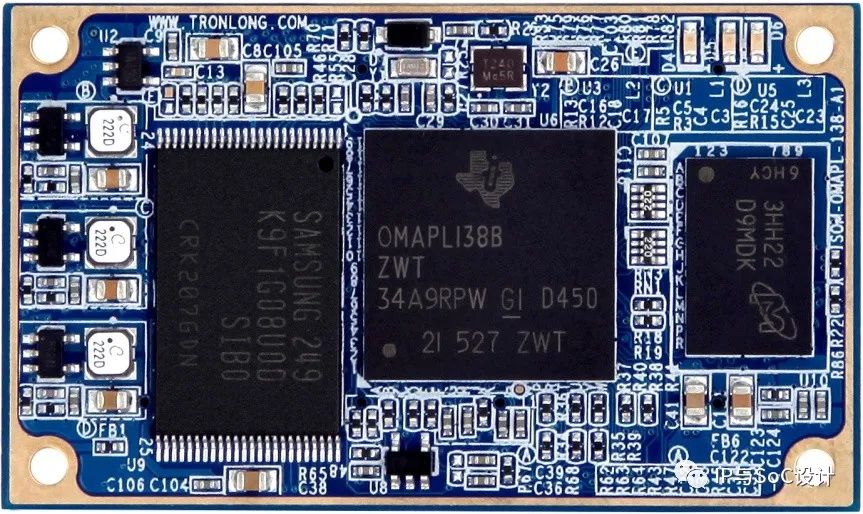
Image source: Internet: OMAP-L138, Floating-point DSP + ARM
Moreover, their differences can be compared from various aspects.
1. Macroscopic View
From a macroscopic perspective, floating-point DSPs have a much larger dynamic range than fixed-point DSPs. In fixed-point operations, programmers must constantly pay attention to the occurrence of overflow. To prevent overflow, they either continuously perform shifting and scaling or truncate. The former consumes a lot of time and space, while the latter leads to a loss of precision. In contrast, floating-point DSPs expand the dynamic range, improve precision, and save computation time and storage space, thus greatly reducing the need for scaling, shifting, and overflow checks.
2. Hardware Perspective
From a purely technical perspective, the differences between fixed-point and floating-point mainly lie in two aspects: hardware and software. The hardware difference arises from the fact that floating-point DSP processors have floating-point/integer multipliers, integer/floating-point arithmetic logic units (ALUs), and registers suitable for storing extended precision floating-point results.
3. Software Perspective
Looking at the differences in software development, there are characteristics and considerations specific to floating-point DSP programming, as well as scaling, shifting, and overflow detection operations when performing floating-point operations on fixed-point DSPs. When comparing two floating-point numbers, never use the operator == to check for equality. Even when comparing two identical numbers, there may still be slight rounding differences. Even defining an exact zero is not very safe; although C language has a representation for zero, never write code like (x==0); instead, write it as (fabs(x) < TINY), where TINY is defined as a very small value, representing the rounding error of the processor’s floating-point format.
4. Application Examples
Another important distinction involves the choice between fixed-point and floating-point DSP processors based on application scenarios. Designers are concerned with the final system performance, cost, and time to market.
For example, in mobile television, floating-point processing is unnecessary. However, in military radar, floating-point processors are frequently used.
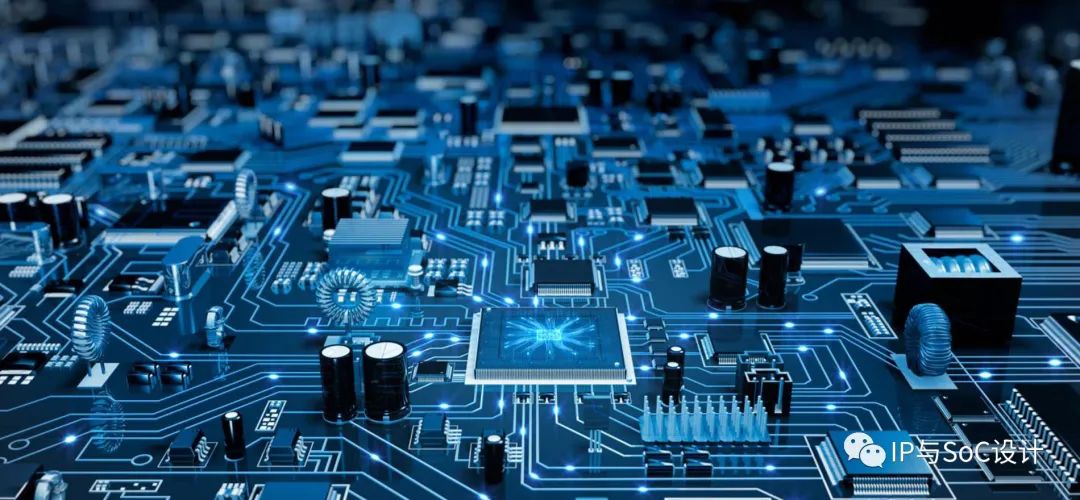

Companies like Faraday and Ceva provide high-quality DSP IP products.

Product showcase
For IP details, see:https://www.ip-soc.com/vendors (click to read the original text)

This article’s content is compiled from the internet
References:
1. https://blog.csdn.net/casularm
2. https://blog.csdn.net/k331922164
3. https://blog.csdn.net/wusuowei1010
4. https://leon1741.blog.csdn.net/
The views expressed in this article are solely those of the author and do not represent the views of the platform.
If there are any objections, please feel free to contact us.
If there is any infringement, please contact us for deletion.
PreviousHighlightsReview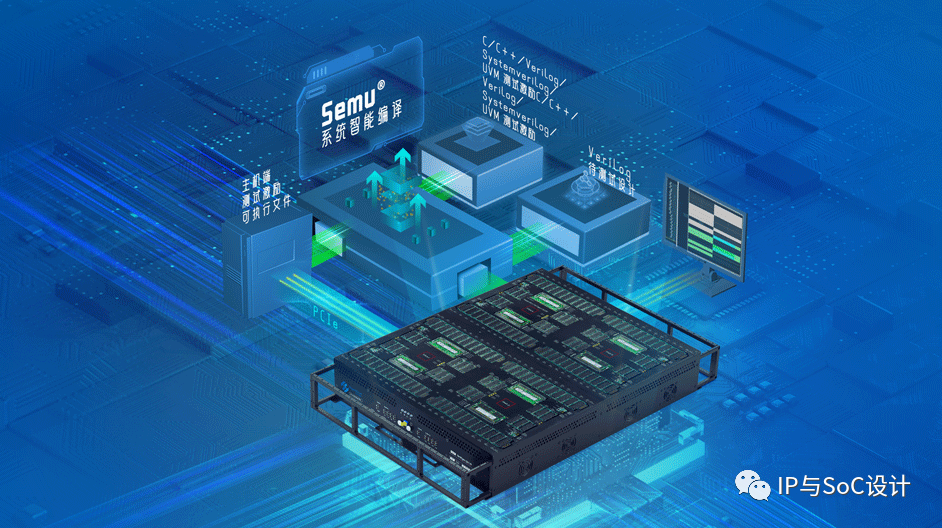
The first snow of 2021! Analysis of Intel’s Q4 2020 financial report
Accelerating functional simulation using hardware-assisted verification tools
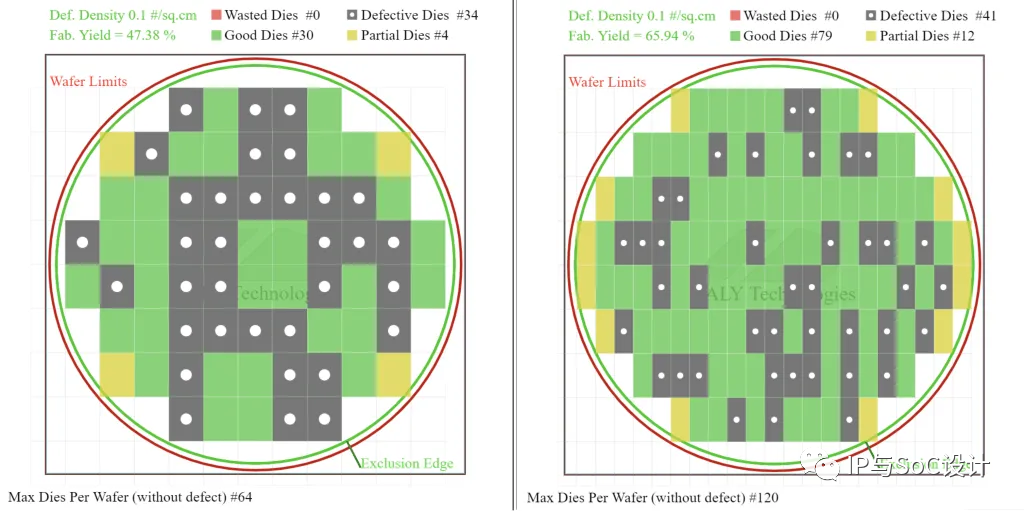
Blog: The challenges of die size and photomask—cost models for lithography scanner throughput

Blog Dispatch: Race condition in digital circuits